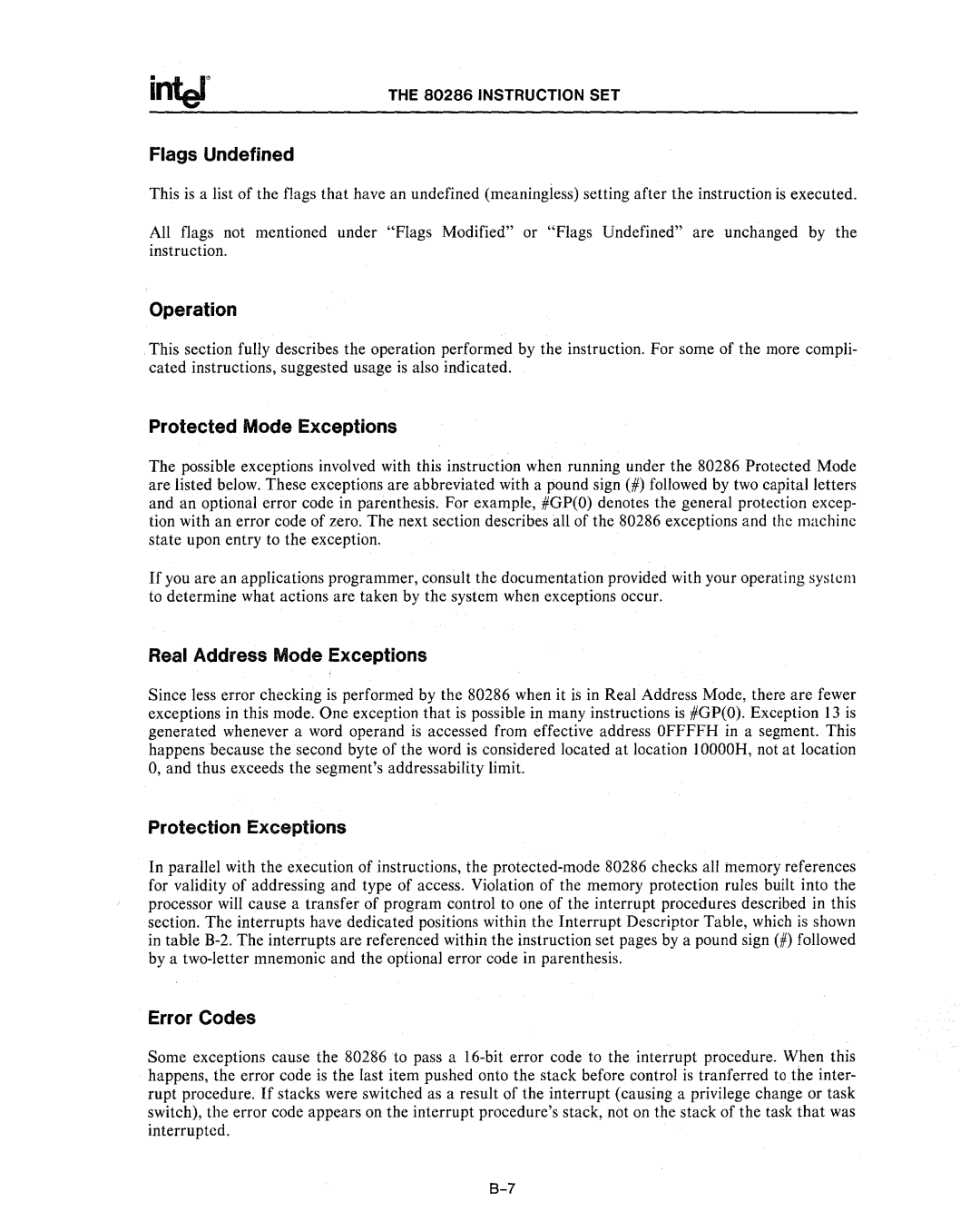
THE 80286 INSTRUCTION SET
Flags Undefined
This is a list of the flags that have an undefined (meaningiess) setting after the instruction is executed.
All flags not mentioned under "Flags Modified" or "Flags Undefined" are unchanged by the instruction.
Operation
This section fully describes the operation performed by the instruction. For some of the more compli- cated instructions, suggested usage is also indicated.
Protected Mode Exceptions
The possible exceptions involved with this instruction when running under the 80286 Protected Mode are listed below. These exceptions are abbreviated with a pound sign (#) followed by two capital letters and an optional error code in parenthesis. For example, #GP(O) denotes the general protection excep- tion with an error code of zero. The next section describes all of the 80286 exceptions and the machine state upon entry to the exception.
If you are an applications programmer, consult the documentation provided with your operating system to determine what actions are taken by the system when exceptions occur.
Real Address Mode Exceptions
Since less error checking is performed by the 80286 when it is in Real Address Mode, there are fewer exceptions in this mode. One exception that is possible in many instructions is #GP(O). Exception 13 is generated whenever a word operand is accessed from effective address OFFFFH in a segment. This happens because the second byte of the word is considered located at location 10000H, not at location 0, and thus exceeds the segment's addressability limit.
Protection Exceptions
In parallel with the execution of instructions, the
Error Codes
Some exceptions cause the 80286 to pass a
